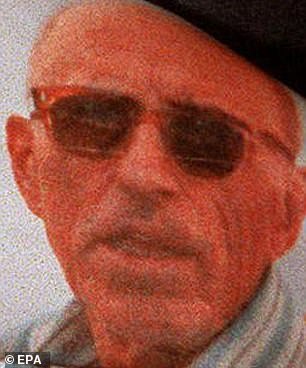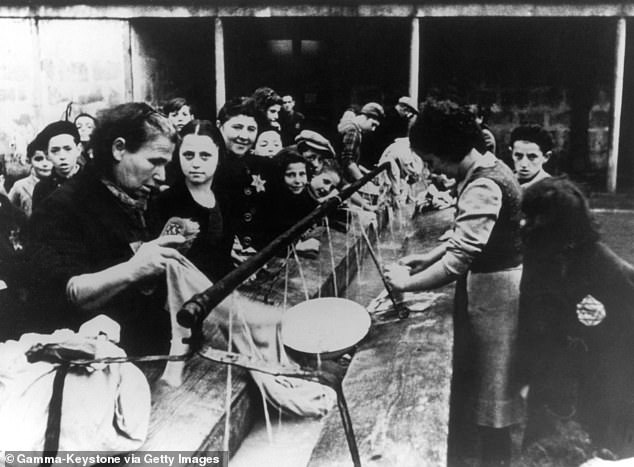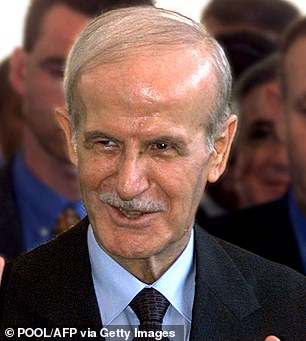It was a fitting end for a monster that condemned more than 100,000 Jews to death.
Alois Brunner, once the world’s most wanted Nazi, spent his final years in a cell in Damascus, where he was given the choice between an egg or a tomato to eat each day.
But in the decades he spent as a guest of the Assad regime in Syria after fleeing postwar Germany, Brunner proved his worth before being sentenced to prison.
As deputy to Holocaust architect Adolf Eichmann, Brunner had overseen the deportations of Jews from countries such as France and Austria and carried out interrogations that allegedly left bloodstains and bullet holes on the walls of his office.
The war criminal, who may have survived until 2010, advised the Syrian dictatorship on torture methods he had learned in positions including commandant of the Drancy internment camp outside Paris.
In return, Hafez al-Assad, the father of ousted Syrian President Bashar, who fled to Russia after the collapse of his regime, protected him from extradition.
But it was under Hafez – who ruled until his death in 2000 – that Brunner’s fortunes changed after he defied orders not to give interviews and, in the 1990s, was locked up.
By then, he had survived two letter bombs sent by Israeli intelligence that caused him to lose an eye and all the fingers on his left hand.

Alois Brunner, once the world’s most wanted Nazi, spent his final years in a cell in Damascus, where he was given the choice between an egg or a tomato to eat each day. He was imprisoned after initially proving himself to the Syrian regime by imparting his knowledge of SS torture methods.

He advised the Syrian dictatorship on the torture methods he had learned in positions that included commandant of the Drancy internment camp outside Paris. Above: inmates in the Drancy camp
Nazi hunter Efraim Zuroff said in 2014 that he was “99 percent sure” that Brunner lived until 2010 before being buried at a now-unknown location in Damascus.
The war criminal was once described by Eichmann – who was executed in Israel in 1962 after being captured by the Mossad in Argentina – as one of his best men.
Eichmann sent him to supervise the deportations whenever he felt they were progressing slowly.
Much of his time was spent hunting down Jews who had fled to the relative safety of the Italian-occupied area of the French Riviera.
He is believed to have sent 47,000 Jews in Austria, 44,000 in Greece, 23,500 in France and 14,000 in Slovakia to concentration camps. Most were killed.
Nazi hunter Simon Wiesenthal wrote in his memoirs in 1989: “Among the criminals of the Third Reich still living, Alois Brunner is undoubtedly the worst. In my opinion, he was the worst of all.
“While Adolf Eichmann drew up the General Staff’s plan for the extermination of the Jews, Alois Brunner put it into practice.”
Brunner, who was sentenced in absentia to life in prison by a French court in 2001, left Germany for Egypt in 1953 with a passport in the name of Georg Fischer.
In a 1987 telephone interview with the Chicago Sun Times, Brunner stated that he had no regrets about his participation in the Holocaust.
‘They all deserved to die because they were agents of the devil and human trash. “I have no regrets and I would do it again,” he said.
Brunner’s crimes were exposed when Eichmann was tried in Israel.


Brunner was protected from extradition by Hafez al-Assad (left) and then by his son Bashar, who was deposed over the weekend.

Brunner was in charge of the Drancy internment camp (pictured) outside Paris.
It was also learned that he had attempted to organize the kidnapping of Dr. Nahum Goldmann, president of the World Jewish Congress, in order to exchange him for Eichmann.
But the plan fell apart when former Nazi commanders refused to participate and the plan was leaked to Wiesenthal.
Brunner lived in Damascus, at 22 George Haddad Street, where other Germans in exile also lived, including Fanz Stangl, former commandant of the Treblinka concentration camp.
However, Brunner’s movements became increasingly restricted in the 1980s and 1990s after he gave several interviews in violation of Assad Senior’s orders to keep a low profile.
In 1996, Assad ordered his indefinite imprisonment. A guard said that “the door was closed and never opened again.”
A Syrian commander is said to have instructed the jailers: “Do not kill this pig, but do not try to keep him alive either.”
But Brunner outlived Hafez himself, who died in 2000.


Adolf Eichmann (on the left in an SS uniform and on the right in his trial), the man considered the architect of the Holocaust, was Brunner’s boss. He described Brunner as one of his best men. Eichmann was kidnapped in Argentina by the Mossad and tried in Israel before being executed in 1962.
There were high hopes that former NHS ophthalmologist Bashar would be different, but he continued his father’s reign of terror and failed to hand over Brunner.
New videos shared by rebels in Syria have revealed an “iron press” that was allegedly used to crush and execute prisoners at the notorious Saydnaya prison near Damascus.
Amnesty International says dozens of people were secretly executed each week in Saydnaya, and estimates that up to 13,000 Syrians were killed between 2011 and 2016.
Images of what appears to be some kind of large hydraulic press inside the prison have yet to be verified, but stories of torture, deprivation, starvation and executions at Saydnaya are widely documented.
Syrian rebels are now locked in a race against time to free thousands of prisoners reported to be trapped in secret cells buried deep inside the prison despite the collapse of the Assad regime over the weekend.

